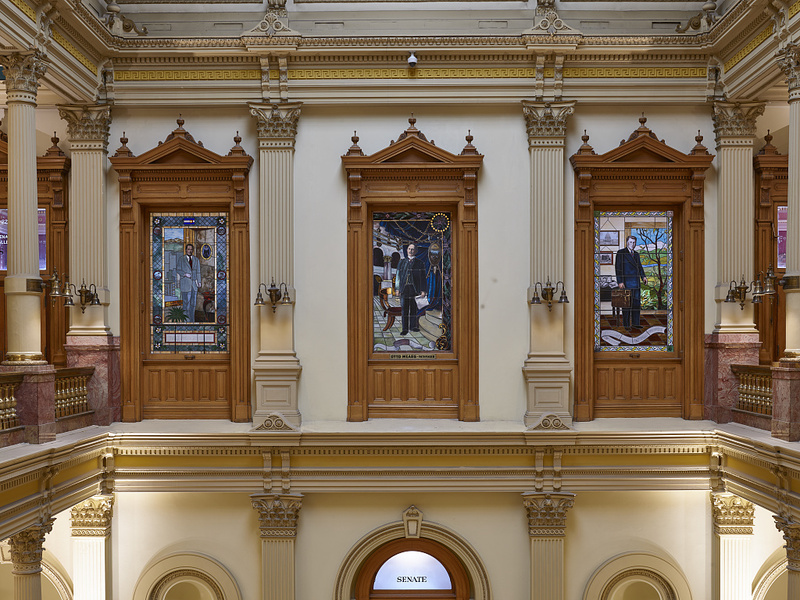Colorado State Capitol in Denver

This unique building houses the Legislature and Governor of the Colorado State Government. Its architecture and construction reflect some of the history of early Colorado.
The land that would become modern Colorado was acquired by the United States in two parts. Its eastern half was part of the Louisiana Purchase, and the west was ceded by Mexico at the end of the Mexican–American War. Native tribes, including the Ute, Arapaho, Jicarilla Apache, Comanche, and Navaho, had long called the area home, but encroachment and attacks by European Americans changed demographics in the mid-nineteenth century, displacing and dispossessing the original inhabitants. Prospectors discovered gold veins near present day Denver and Boulder in 1858 and founded Denver the following year. White miners, merchants, and families moved into what was then part of the Territory of Kansas to seek their fortune. Locals seeking political independence organized the Jefferson Territory, which was then established as the Colorado Territory by the U.S. Congress in 1861.
The 1886 projected cost of construction was $1,000,000, equivalent to $26,400,000 in 2020, but by the time of its completion, it had cost $3,700,000, equivalent to $97,400,000 in 2020. The Board of Capitol Managers fired the original designer, E.E. Myers, after successive cost overruns, and the capitol was completed under Frank Edbrooke in 1901. Myer’s original commission was to be based on a percentage of the total cost of construction, so there had been an incentive to spare no expense.
In 1876, Colorado’s founders christened it the “Centennial State” and used this association with the nation’s centennial for promotion. Builders laying the cornerstone of the Capitol in 1890 on July 4th furthered the association with America’s founding. The Colorado State Capitol is intentionally modeled after the Capitol building in Washington, D.C. as a neoclassical “Greek Cross.” The structure extensively uses several types of native Colorado marble, some of which can only be found in the state. These include the ultra-dense Yule marble and beautiful Rose Onyx, which is technically a type of metamorphosed limestone containing iron oxide. The interior contains murals, stained glass, and statuary. The exterior houses various monuments, cannon, and “mile high” markers for the approximate elevation.
The gold rush that prompted settlement in Colorado made it seem like anyone could become rich. Even though the rush’s profits never exceeded the total investment and only a relative few made their fortune, this vision of accessible wealth drove the early development of Colorado. A notable reflection of this history in the actual architecture of the Capitol is the beautiful golden dome which crowns it. In 1908, miners donated 200 ounces of gold to gild it in commemoration of the 1858 gold rush. The original copper dome that could be afforded in the original construction had been deemed by Coloradans to be insufficiently grand. Since then, the Capitol has been upgraded several times for safety, technology, and comfort.
With the gold rush long over, the Colorado State Capitol building in Denver is now the administrative center of a state which has outgrown its goldmining past to become dynamic and economically diverse. It is a building which speaks to the time of its creation as well as the present.
Images



